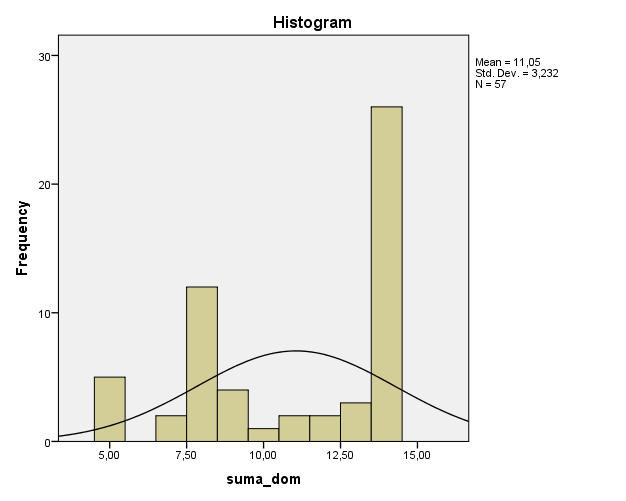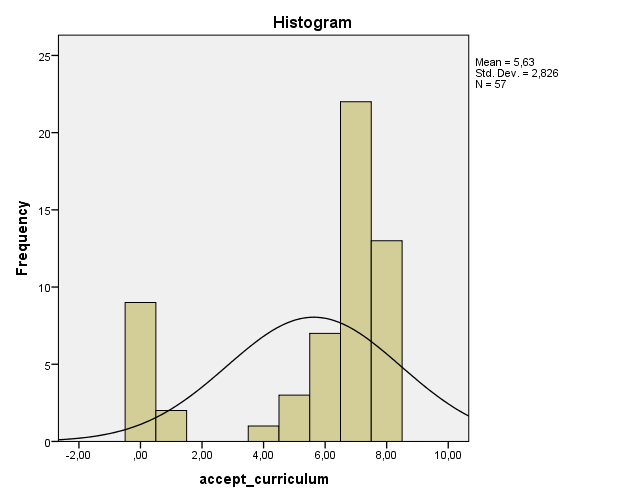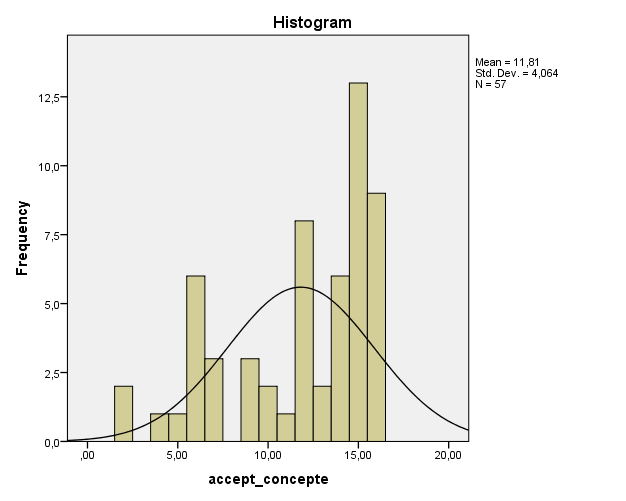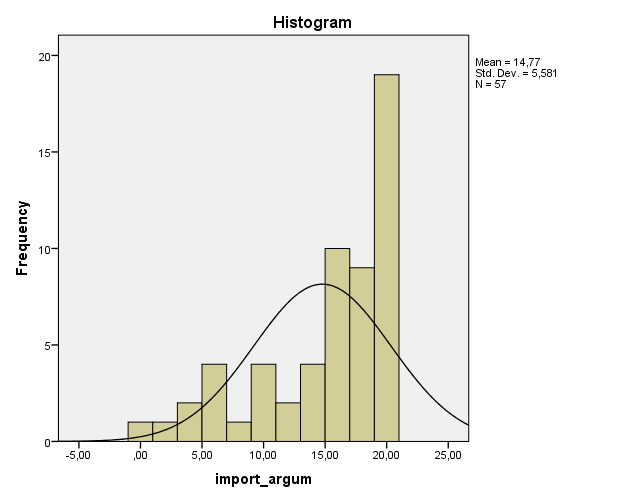Abstract
The Early Education curriculum reform project (2018) brings an improved view of education for this age segment and is a complex approach that capitalizes on previous contributions, experience and successful practices in early education in Romania, which have been conducted over the last ten years. The design of curriculum documents is based on the following characteristics: the adaptability of the curriculum to the characteristics of today's child; curriculum extension by reporting to 6-year-old children through learning experiences in as many experiential areas as possible; balance in the approach of each field (knowledge, experience, competence); relevance, being appropriate both to the present and future needs of pre-school and pre-school children, contributing to the optimization of their understanding of the world they live in and their own person; differentiation to allow the development and manifestation of individual characteristics even in children of the same age; progression and continuity in order to facilitate the optimal transition from one level of study to another and from one learning cycle to another or from one educational institution to another. In this context, we investigate the opinion of the teachers about the acceptance or rejection of the requirements imposed by the new curriculum for early education from the perspective of the curricular concepts with which it operates, the adaptation of learning contents to everyday reality, as well as the preoccupations, interests, inclinations the child's skills.
Keywords: Curriculumearly educationreformdidactic behaviors
Introduction
With a relative frequency, in all educational systems, the curriculum is undergoing a process of updating or reforming, depending on the nature and magnitude of the changes being pursued. In the international context, there is even a discussion about the "permanence" of reforms, amid the speed of social, economic and above all technological change. "Educational reforms (...) go through different stages, with peak times or radical changes, with less visible interim periods, and with periods of consolidation of acquisitions acquired in earlier stages" (Potolea, Toma, & Borza, 2012, p.12).
Thus, it is necessary to make important, relevant and constructive changes in a systemic approach in which the curriculum component interacts and evolves simultaneously with other components of the education system, such as teacher training, elaboration of school manuals and other learning resources, student performance evaluation, school management, etc. (Institute of Education Sciences, 2015, p.2).
The project of restructuration of the national curriculum for early education debated and analyzed in 2018 is based on the reform of the curriculum and the previous steps starting with 2008 (MECT, 2008), of which we mention the introduction of the concept of early education and the generalization of pre-school education, promoting its compulsory character and the benefits of early childhood education; multiple investments in educational infrastructure obtained through the implementation of projects at national level and with the participation and involvement of international bodies such as UNICEF, Centrul Educatia 2000+ or Council of Europe Development Bank. They have contributed especially to the training of teachers and other categories of people in contact with the preschool child to facilitate the promotion and implementation of new educational approaches. Thus, each experience shared in these reforming actions represented an important breakthrough from the perspective of understanding the concept of early education, building learning experiences and approaching the child from the perspective of current principles of psychology and pedagogy (
Problem Statement
The national curriculum design perspective builds on previous contributions, good practice in curriculum design and thus, the current regulatory framework is oriented to promote value-oriented education, creativity, cognitive capacities, will capacities and action abilities, basic knowledge and knowledge, skills and abilities of direct utility, in the profession and in society, according to LEN 1/2011, Art. 2 (1).
Also, the National Education Law no. 1/2011 (MECT, 2011), as subsequently amended and supplemented, in Chapter IV, art. 67 (1) is mentioned: "The national curriculum for early education is centered on the physical, cognitive, emotional and social development of children, and on the early remediation of potential development deficiencies. "Early education aims at the overall development of the child, and the approach must be holistic/comprehensive to respect the uniqueness and socio-cultural heredity and to facilitate the attainment of its own potential. The curriculum approach from the point of view of global development aims at covering all important aspects of the child's complete development, in accordance with his/her age and individual peculiarities. "Paradigm shift" at the level of early education in recent years, changes in the curriculum, aim to improve, reorient and expand the focus of educational approaches for children (Institute of Education Sciences, 2015).
The new curriculum for early education brings an improved view of education for this age segment embedded in the content of the curriculum, in the Methodology for applying the curriculum for early education, in methodical letters and recommendations, in guides and methodical guidance advised by the ministry, constituting a complex approach that capitalizes on previous contributions, experience and successful practices in early education in Romania. This is addressed to all teachers, managers, decision-makers, early education specialists - pedagogues, psychologists, counselors, academics who provide initial and continuous initial and early training of teachers in early education (through teaching and through programs, courses or training courses) as well as other actors at the level of society, with an important role in education. (Curriculum for early education, project, p.4) (MECT, 2018).Compatibility of the curriculum documents elaborated in the framework of the reform with the results of pedagogical researches and international educational practices trends in order to form a curricular culture, expressed in appropriate educational practices that emphasize the following dimensions:a) designing the curriculum for early education:
- a new curricular concept for early education, which prepares, through specific approaches, the formation of later competences (as a set of knowledge, abilities and attitudes);
- ensuring continuity within the same curriculum, from birth to 6 years;
- creating interdependence between school subjects (from the preparatory class and grades I and II) and types of learning activities in early education;
- promoting evaluation according to the same principles as design principles, as part of the curricular reform process in pre-university education, and
- capitalizing on formal, non-formal and informal learning contexts;
- promoting the opportunities offered through open educational resources provided by communities and technologies;
b) the concepts of learning activity in early education:
- placing the learning process at the center of the educational institution - crèche, kindergarten, other institutions, not important what the teacher "taught", but what the child has accumulated / learned;- orienting the learning process towards capacity building and attitudes, developing competences for creativity and problem solving;
- flexible learning provision that does not promote a single, uniform education but a tailored one for each child, depending on its individual characteristics and needs;
- adapting learning content to everyday reality, as well as to the child's concerns, interests, inclinations and skills;
- introducing new ways of selecting and organizing goals and content based on "not how much, but how," "not much but good" principles. What is important is not just what, but how the child learns, by what means, how well, when and how could help him what he has learned;
- the possibility and recommendation of developing individualized, motivating children's pathways, oriented towards adaptation, integration, support and development, but also towards innovation and creativity;
- valorization of integrated approaches and reconsideration of the principle of child-centered learning; (MECT, 2017).
By capitalizing on the curriculum reform policies for early education, the practitioner will achieve the necessary pedagogical derivations and, starting from the development areas covered in the Curriculum for Early Education and detailed in the Fundamental Principles in Child Development and Development from the age of 7, select the competence units and elements of competence that it will follow; will formulate the operational objectives of the educational activities to be carried out; will transfer competency units and competency elements into teaching practice and will "operationalize" them by building learning situations appropriate to behaviors they wish to form within the operational objectives.
Through approaching kindergarten activities in an integrated manner, the kindergarten teacher organizes the process of teaching as a director and helps pupils understand and accept opinions, emotions and feelings, the teacher also encourages them to be partners in the teaching process (Petrovan, 2014).
Research Questions
In our research we aim to identify the answer to the following questions:- What is the level of teacher's knowledge of curricular concepts with which the current curriculum for early education operates? The 10 years of reforms in the preschool environment presupposed: reorganization of learning activities into the following categories: activities on experiential areas that can be integrated or disciplined; games and activities freely chosen); personal development activities. Learning activities (both at pre-school and pre-primary level) represent a set of actions of a planned, systematic, methodical nature, organized and led by the teacher, in order to reach the competence units and the elements of competence set out in the Curriculum for Early Learning. Their implementation requires the co-ordination of the joint efforts of the three partners in the teaching-learning-evaluation process, namely: teachers, parents, children, but also collaborators and educational partners from the community, whose involvement is equally important. In doing so, the emphasis will be on encouraging the child's initiative, learning through experiments and individual exercises. Learning activities take place individually, in small groups or with the whole group of children. (Curriculum for early education, project, p.17) (MECT, 2017)
- What is the opinion of the teaching staff on the importance of introducing into the education plan for the early education of the pre-school period from birth to six years, the main argument being given by reporting the whole curriculum to the fundamental milestones in the child's learning and development? An important contribution of the curriculum reform project for early education is the education curriculum for early education as a school document developed by the Ministry of National Education: it has a unique and binding character and is presented in a schematic form, encompassing all the learning activities for each group and age, the number of weekly hours per activity category, to ensure that all children in all pre-school and state-owned state and private schools in the country have access to the same type of education and equal opportunities in development and learning. This applies to all types of education and care services offered to children from birth to 6 years, including children with special or specially integrated education, in which case more attention will be paid to the waiting of a child's response, joy to work with others, etc. and less the number of activities it carries out.
- What is the attitude of teachers regarding the acceptance or rejection of certain curricular concepts proposed for use in the new curriculum? The curriculum design for early education proposes replacing general / framework / specific objectives with units and competency elements, reporting competency elements to development areas, important examples of behaviors and examples of learning activities in the teacher's work. Restructuring teachers' attitudes to curricular reform in early education, can bring some obstacles “…reforming or shaping the personality of teachers is often difficult because the adult is sometimes characterized by conservatism, stiffness and increased resistance to change; the need to permanently duplicate the theoretical discourse with examples of genuine practical relevance; lowering the authoritarian power of the teacher, on the one hand, due to the often small difference of age between the educator and the educated and, on the other hand, because the social roles deeply mark the personality of the adults” (Herman, 2018).
- What is the degree of recognition and importance of the arguments behind the restructuring of the curriculum for early education? Among the arguments put forward in completing the curriculum reform we enumerate: the systemic approach of early education, early education and pre-school education, create the prerequisites for skills training from very young age as it has as reference the key competencies that determine the student's training profile later, engages children from birth to 6 years through learning experiences in as many as possible experiential areas.
Purpose of the Study
Identifying the opinion of pre-school teachers, qualified teachers who have undergone certain forms of training in the profession, especially obtaining teaching degrees, about the importance and relevance of changing the curriculum for early education, which will complete the reform that began in the 2008 school year.
Research Methods
Sample
It was made up of 57 people, all teachers. These people were invited to fill in the questionnaire for this research. The minimum age was 23 years, the maximum was 57 years, with a mean of M = 34.53 years (SD = 8.400 years). All participants were female.
The mean age in education was M = 15.53 years and SD = 9.936 years, with a minimum of one year and a maximum of 40 years. Of these people, 8 received the ”definitivat” degree, 9 obtained the second degree and 29 people obtained the first degree.
Instruments
The tool used is a survey questionnaire, structured in items grouped into five categories of information or opinions, as follows:
-descriptive data (age, seniority, grade)
- data on the level of knowledge and application by the teachers of the curricular concepts with which the current curriculum for early education operates; 3 questions.
- data on the opinion of the teaching staff on the importance of introducing into the education plan for the early education of the early period from birth to six years; 2 questions.
- data on teacher attitudes about accepting or rejecting certain curricular concepts proposed for use in the new curriculum; 4 questions.
- data on the degree of recognition and importance of the arguments behind the restructuring of the curriculum for early education. A 5-point question, each distinct.
Except for descriptive data and data on the level of knowledge and application of curricular concepts by teachers (where the correct answers were counted), the answer to all other questions allowed the choice of a variation on a 5-point scale (0-4). These answers were summed up in each group of questions.
Statistical processing
It sought to obtain more data using mean, frequency and correlation analysis.
Findings
The results are grouped around the 5 categories of information in order to answer the questions of this research.
Most of the respondents know and apply the curricular concepts with which the current curriculum operates for early education (figure
1 ). Thus, the mean score obtained was 11.05 (SD = 3.23). This mean is high, representing over 70% of the maximum score that could be achieved.

b) Most of the respondents accept the introduction of the new curriculum. Thus, the mean score obtained was 5.63 (SD = 2.82) (figure

-
The same as with the other variables, also the attitude of teachers regarding the acceptance of certain curricular concepts proposed for use in the new curriculum, there is a predominantly favorable attitude. Thus, the minimum value obtained was 2, the maximum value 16 (also the maximum possible to be achieved), with a mean value of M = 11.8 (SD = 4.06) (figure
3 ).

d) The last calculated variable, related to the recognition and importance of the arguments underlying the restructuring of the curriculum for early education, confirmed the same trend, obtaining a mean of M = 14.7 (SD = 5.58), the lowest possible value being 0 and maximum 20 (figure

By comparing histograms, the common point is the right trend of the answers. There is also a difference, the first two figures show the existence of two relatively distinct poles, while in the last two histograms can be found a gradual passage.
Correlation analysis revealed that the acceptance of the new curriculum correlates statistically significant negatively with professional seniority (r = -, 340; p =, 013) and correlates statistically positive with the acceptance of proposed curricular concepts (r =, 801; p = .001).
In addition, professional seniority correlates statistically significant negatively (only marginally) with the last calculated variable, recognition of the importance of arguments (r = -, 274, p =, 047)Although age and grade (didactic grade) correlate statistically significant positive (r = ,634; p =, 001), however, the grade variable does not obtain a significant correlation index with the acceptance of the curriculum or the recognition of the importance of the arguments for the new curriculum.
Conclusion
Understanding the new concepts introduced by curriculum reform for early education and applying them to the areas of development covered in the Curriculum for early education and detailed in the Fundamental Principles in Child Development and Development from the age of seven to 7 are of particular importance for the changes proposed in practice educational. In this respect, identifying teachers' opinions on the attitude of accepting or rejecting the requirements of the new curriculum for early education in this study demonstrates a favoruable, open attitude, the average of opinions being high and positive, to most of the answers provided.
We just mention that seniority in the profession indicates greater resistance to changing the curriculum. This resistance to change is attenuated if seniority in the field is accompanied by a higher didactic degree.
References
- Herman, I.R. (2018). Teachers and students personal development needs - theoretical perspectives. The European Proceedings of Social and Behavioral Sciences, XLI, 704. Retrieved from: https://www.futureacademy.org.uk/files/images/upload/Contents_EPSBS_ERD_2017.pdf
- Ionescu, M. (coord.) (2010). Repere fundamentale în învățarea și dezvoltarea timpurie a copilului de la naștere la 7 ani, București : Vanemonde, Retrieved from: http://www.unicef.ro/wp-content/uploads/Repere-fundamentale-in-invatarea-si-dezvoltarea-timpurie-a-copilului.pdf [accessed 26 March 2018].
- Institutul de științe ale educației (2015). [Institute of Education Sciences] Repere pentru proiectarea și actualizarea curriculumului național. Document de politici educaționale, Institutul de științe ale educației, Retrieved from: http://www.ise.ro/repere-pentru-proiectarea-si-actualizarea-curriculumului-national. [accessed 18 March 2018].
- MECT (2008). Curriculum pentru educaţie timpurie. Retrieved from: http://oldsite.edu.ro/index.php/articles/10135 [accessed 20 March 2018]
- MECT (2017). Curriculum pentru învăţământ preşcolar-draft 2018 Retrieved from: https://www.isjbn.ro/sites/default/files/documente/2018-03/Curriculum%20pentru%20educatie%20timpurie%202017.pdf [accessed 20 March 2018]
- MECT (2018). Strategie privind educaţia timpurie, Retrieved from: http://www.isj.sv.edu.ro/images/Docs/Discipline/invatamnat_preprimar/2017/Documentatii_curriculare_ i_metodice/Strategia_nationala_privind_educatia_timpurie.pdf [accessed 20 March 2018]
- MECT (2011). Legea educației naționale nr.1/2011, Retrieved from: https://www.edu.ro/sites/default/files/_fi%C8%99iere/Minister/2017/legislatie%20MEN/Legea%20nr.%201_2011_actualizata2018.pdf [accessed 22 March 2018].
- Petrovan, R., (2014), Intellectual education preschool through integrated activities, Educatia 21 Journal Issue, Retrieved from: http://educatia21.reviste.ubbcluj.ro/index_htm_files/Ramona%20Petrovan.pdf [accessed 12 September 2018].
- Potolea, D, Toma, S., Borza, A. (coord.).(2012) Coordonate ale unui nou cadru de referinţă al curriculumului naţional, CNEE, Bucureşti.
Copyright information

This work is licensed under a Creative Commons Attribution-NonCommercial-NoDerivatives 4.0 International License.
About this article
Publication Date
15 August 2019
Article Doi
eBook ISBN
978-1-80296-066-2
Publisher
Future Academy
Volume
67
Print ISBN (optional)
-
Edition Number
1st Edition
Pages
1-2235
Subjects
Educational strategies,teacher education, educational policy, organization of education, management of education, teacher training
Cite this article as:
Trif-Muntean*, L., & Igna, C. V. (2019). Curriculum Reform In Early Education: Representations Of Teachers. In E. Soare, & C. Langa (Eds.), Education Facing Contemporary World Issues, vol 67. European Proceedings of Social and Behavioural Sciences (pp. 1603-1611). Future Academy. https://doi.org/10.15405/epsbs.2019.08.03.196
